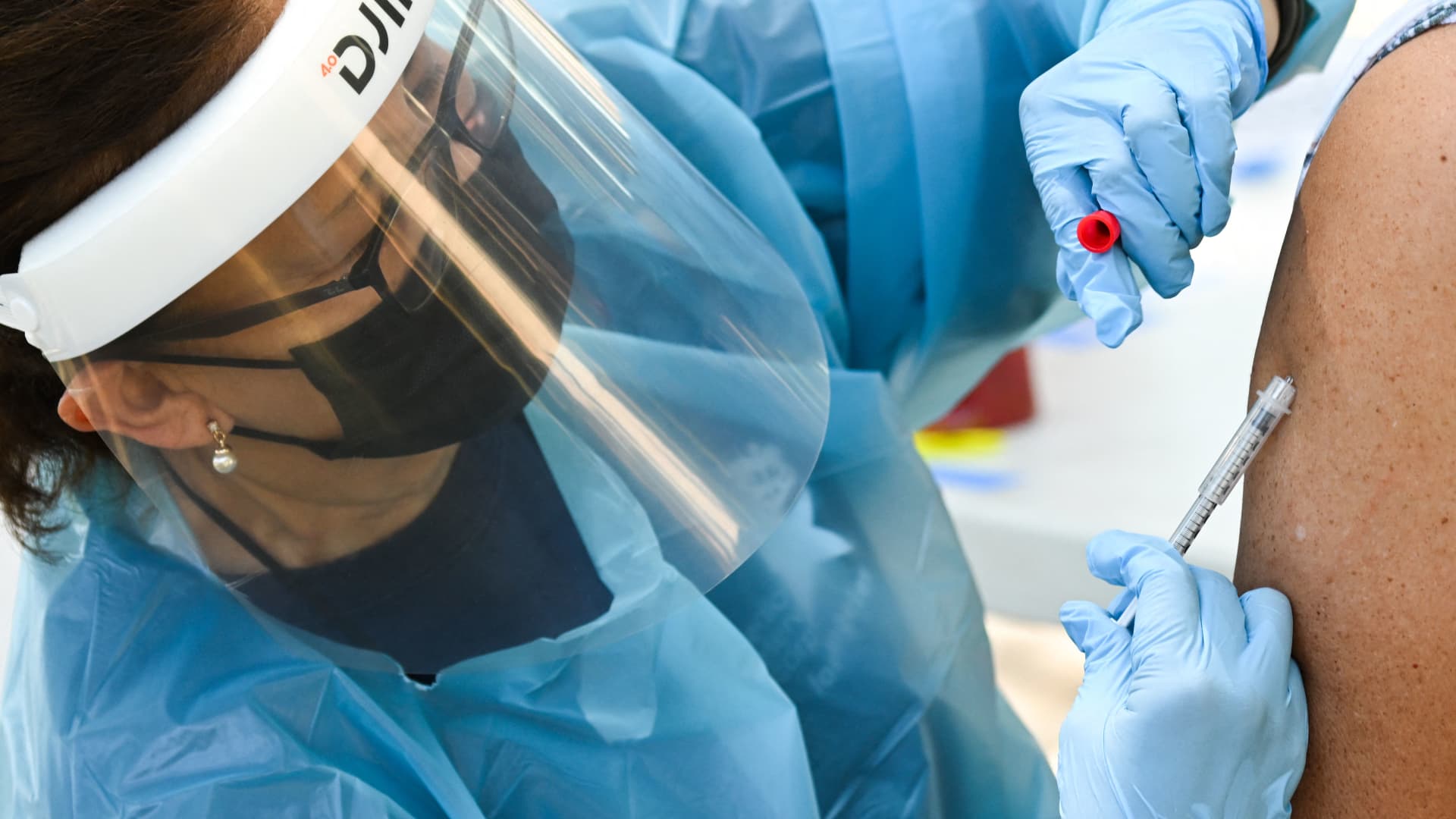Probiotics vs. Antibiotics for Autism
What role do antibiotics play in the development and treatment of autism spectrum disorder? “There are many examples in nature of intestinal microbes altering host […]

What role do antibiotics play in the development and treatment of autism spectrum disorder?
“There are many examples in nature of intestinal microbes altering host behavior. One such example involves the eukaryotic pathogen Toxoplasma gondii when it infects a rodent, causing the animal to lose its innate fear of the odor of bobcat urine.” The brain parasite, infecting the rodent through the gut, finds its way into the brain. Why does the parasite care about what mice are afraid of? Because, by not avoiding predators, they’re more often caught and eaten, and the parasite is “then excreted in the bobcat stool where it is able to infect other rodents.” If you’re a mouse-brain parasite, how are you going to spread? Mice aren’t cannibals, so you have to make sure the mouse you’re in is eaten by something else. So, the parasite evolved a way to alter the mouse’s behavior.
Given the potential power of microbes to affect behavior, might the disruption of our gut microbiome, our good gut bacteria, be a potential factor in the causation of autism? That’s the very topic I cover in my video The Role of the Gut Microbiome in Autism. As you can see at 1:06 in my video, kids with autism do tend to have altered gut flora, different from those of children without autism. For example, autistic children have significantly less Prevotella, which characterize the healthy gut enterotype that you can foster the growth of yourself with a more plant-based diet. But which came first? Instead of the bad gut flora leading to autism, isn’t it more likely that the autism led to the bad gut flora? Compared with “healthy controls,” children with autism eat significantly fewer daily servings of fruits and vegetables, and their diets are “often characterized by a lack of variety, an inadequate amount of fiber-containing foods”—meaning not enough whole plant foods in general—“and an increased amount of sugar-containing foods.” So, couldn’t that explain the different gut flora?
There are some perinatal risk factors for the development of autism, including premature birth, low birth weight, and, particularly, delivery by caesarean section. What does a C-section have to do with the microbiome? “There may be a protective value offered by the maternal vaginal microbiome” that infants miss out on when they are delivered through a surgical incision instead. During a C-section, sometimes the mothers are placed under general anesthesia, and it’s possible that the anesthetics could affect the babies’ brains before the infants are disconnected from the maternal blood supply. To differentiate between the two scenarios, we’d need a study that compared autism risk between C-sections where the moms got an epidural or spinal block versus caesareans when the moms were under general anesthesia, and we got just that.
“This study examined the incidence of autism in neonates delivered vaginally, by C-section with regional anesthesia (RA), and by C-section with general anesthesia (GA),” and only those infants delivered by C-section under general anesthesia had a higher risk, not those delivered vaginally or by C-sections with RA where moms got just an epidural, for example. This suggests the C-section connection is related to anesthesia drug exposure rather than involving the lack of vaginal flora exposure. This wasn’t an interventional trial, though, in which mothers were randomized to the various groups; it was just an observational study. It’s possible the increased autism risk had less to do with the anesthetic itself than the pregnancy complications that may have led to having to put the mother under. Either way, there doesn’t seem to be a microbiome connection.
Researchers have tried probiotics for children with autism, but, so far, they don’t seem to have helped much. Some families, in desperation, have tried fecal transplants. They aren’t FDA-approved, though, so families are forced to go on the “brown” market. (Ahem.)
Where did this idea come from? It can all be traced back to a remarkable study published in the Journal of Child Neurology. “Several parents of children with regressive-onset autism”—that is, kids who started out acting normally before the autism struck—noted that the change in behavior seemed to start after their child had taken antibiotics. They had gotten chronic diarrhea, suggesting that the antibiotics had mucked with their gut flora. Then came the loss of language, play, and social skills. It all could have been a total coincidence, but it led a group of pediatric gastroenterologists to speculate that maybe there was some cause-and-effect link. Maybe by wiping out the good bugs, some bad, neurotoxic bugs took hold, which led to the autism. If this were true, perhaps they could clean the slate once again with another dose of antibiotics, but this time to try to clear out any bad bugs. Might “appropriately targeted antimicrobial therapy…reduce autism symptoms in these individuals”? That would be groundbreaking.
As you can see at 5:17 in my video, after researchers put the kids on a powerful antibiotic called vancomycin, 80 percent of the children got better. But, within a few weeks after the treatment, most of them slipped back toward their baseline, suggesting that perhaps the bad bugs got pushed down but not out. The study was conducted nearly 20 years ago and only had an “n” of 11, meaning it only looked at 11 kids. (The letter n is research-speak for the number of subjects in a study.) Surely, by now, lots of larger studies have been done, right? In reality, only a single follow-up study has been published, and it had an n of 1.
“An n = 1 case report of a child with autism improving on antibiotics and a father’s quest to understand what it all may mean” was written by the father himself, describing a dramatic improvement in his child’s autism after taking amoxicillin. When he talked to other parents of autistic children, he “discovered, much to [his] surprise, that many…routinely give their children antibiotics to improve their symptoms.” He also heard from other parents, though, who “felt that their children’s autism symptoms became worse when they received antibiotics” or believed that antibiotics were to be blamed for the emergence of the disorder in the first place. All of that speaks to the potential role of the gut flora, however, reinforcing the notion.
When he scoured the medical literature to learn more, all he could find was that study I mentioned with only 11 children. How is it possible there haven’t been follow-up studies? Right before his eyes, he witnessed the evidence in his own child of what that study had shown. He saw this seemingly intractable condition rapidly and dramatically ameliorated in response to an antibiotic—at least in his child. Surprisingly, there have been no attempts to repeat that study. I think most parents would count their blessings that it at least worked on their child and leave it at that, but not this parent. He started his own autism research foundation, the N of One, “with the mission of encouraging, sponsoring, and communicating breakthrough autism research.”
I referred to my video Flashback Friday: What’s Your Gut Microbiome Enterotype?, which you may want to check out. The more important one, however, is How to Change Your Enterotype.
KEY TAKEAWAYS
One example of intestinal microbes altering host behavior is Toxoplasma gondii, a eukaryotic pathogen that infects the guts of rodents and causes them to lose their innate fear of the odor of bobcat urine. The rodents infected by the brain parasite don’t avoid predators and are more likely to become prey, and the parasite is able to spread by being excreted in the bobcat stool where it can infect other rodents. Autistic children tend to have altered gut flora that differs from kids without autism. They have, for example, significantly less Prevotella, which characterize the healthy gut enterotype that can be fostered with a more plant-based diet. This follows since autistic kids typically eat significantly fewer fruits and vegetables each day, and their diets often lack a diversity of foods and inadequate servings of foods with fiber, yet increased amounts of sugar. Perinatal risk factors for the development of autism include premature birth, low birth weight, and delivery by caesarean section, particularly C-section under general anesthesia. Probiotics for children with autism do not appear to be helpful. A study published in the Journal of Child Neurology introduced the idea of fecal transplants, which are not approved by the Food and Drug Administration. Parents of children with regressive-onset autism noted behavior changes in their kids after taking antibiotics for chronic diarrhea, suggesting the medicine altered their gut flora, which was followed by loss of language, play, and social skills. Pediatric gastroenterologists speculated a cause-and-effect link and investigated whether “appropriately targeted antimicrobial therapy…[might] reduce autism symptoms…” The study, conducted nearly two decades ago, only included 11 kids. Eighty percent of them got better after taking a powerful antibiotic, but most slipped back toward their baseline within a few weeks after the treatment. Only one follow-up study has been published, and it included only one child. The father wrote the case report, describing dramatic improvement in his children’s autism after taking amoxicillin. Some parents of autistic children routinely give their kids antibiotics to improve their symptoms, while others feel the symptoms worsen on antibiotics or even blame antibiotics for the disorder’s emergence in the first place.For more on sprucing up your friendly flora, see:
Flashback Friday: Prebiotics: Tending Our Inner GardenFlashback Friday: Paleopoo: What We Can Learn from Fossilized Feces
Flashback Friday: Gut Dysbiosis: Starving Our Microbial Self
If you’re interested in trying to prevent or treat autism—which I completely respect not everyone is—you may want to check out:
Best Foods for Autism Pros and Cons of Gluten-Free, Casein-Free Diets for Autism Flashback Friday: The Best Foods for Fighting Autism and Brain Inflammation The Role of Pesticides and Pollution in Autism Heavy Metal Urine Testing and Chelation for Autism Dietary Supplements for Autism Alternative Treatments for Autism The Role of Pesticides and Pollution in Autism Gluten-Free, Casein-Free Diets for Autism Put to the Test Pros and Cons of Gluten-Free, Casein-Free Diets for Autism Autism and Casein from Cow’s MilkIn health,
Michael Greger, M.D.
PS: If you haven’t yet, you can subscribe to my free videos here and watch my live presentations:
2019: Evidence-Based Weight Loss 2016: How Not To Die: The Role of Diet in Preventing, Arresting, and Reversing Our Top 15 Killers 2015: Food as Medicine: Preventing and Treating the Most Dreaded Diseases with Diet 2014: From Table to Able: Combating Disabling Diseases with Food 2013: More Than an Apple a Day 2012: Uprooting the Leading Causes of Death
 JimMin
JimMin 































